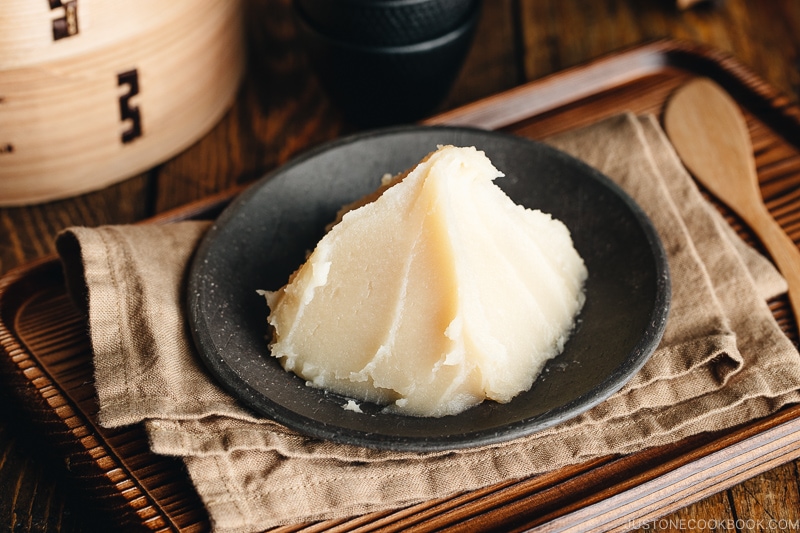
White Bean Paste or Shiroan is commonly used as a filling for wagashi (Japanese confectionery) such as mochi and manju. The paste has a milder bean taste, so it makes a great alternative to red bean paste (anko or an)!
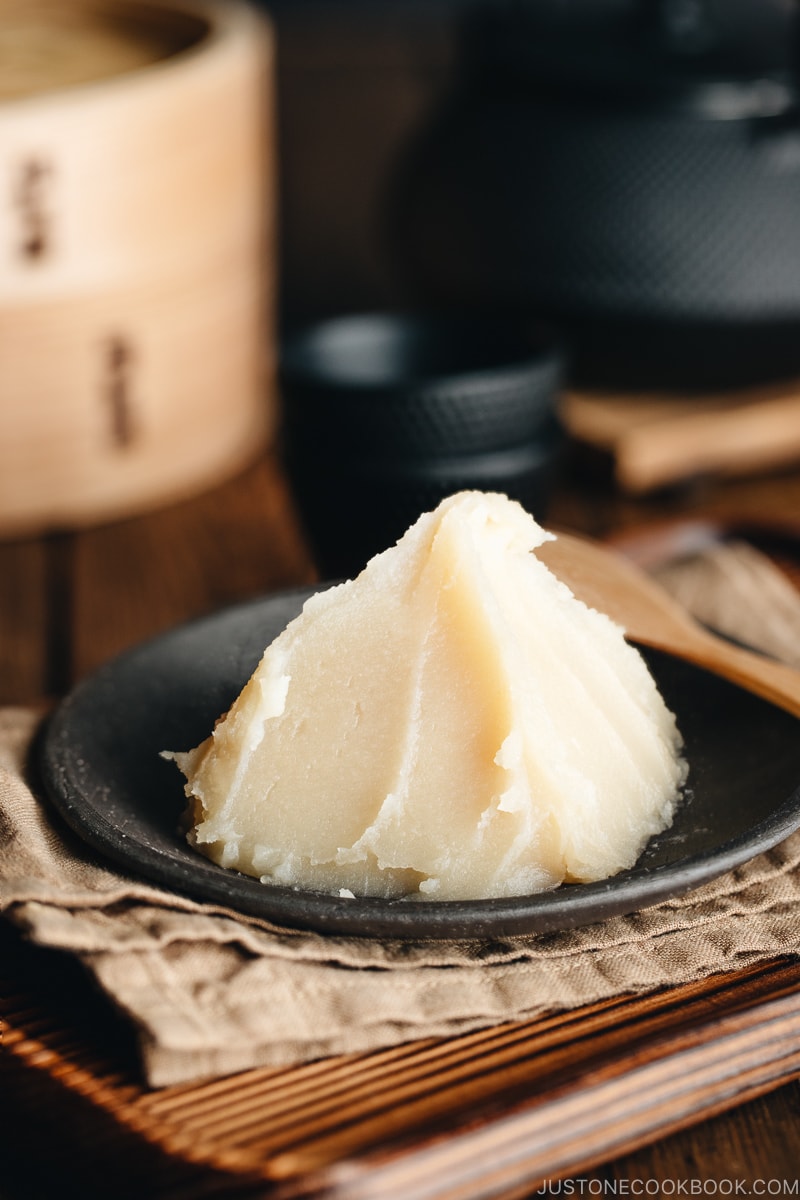
White bean paste or Shiroan (白餡, 白あん) is primarily used as a filling for sweet desserts and pastries in Japanese and East Asian cuisines. It has a milder bean taste, so those of you who don’t like red bean paste may enjoy Wagashi (Japanese confectionery) filled with white bean paste.
While you can easily buy red bean paste in Japanese or Asian grocery stores, premade white bean paste is almost impossible to find outside of Japan. It’s quite simple to make, but the process does take some time. Nonetheless, you can always make white bean paste ahead of time so it’s ready for use when you make Japanese sweets.
Watch How to Make White Bean Paste
White Bean Paste or Shiroan is commonly used as a filling for wagashi (Japanese confectionery) such as mochi and manju.
What is White Bean Paste (Shiroan)?
Shiroan (白餡 or 白あん) is the smooth and sweet white paste called an (餡) or anko (餡子) made from lima beans or butter beans, or in Japanese, Shiro Ingen Mame (白いんげん豆). The beans are hulled, simmered till tender, drained, and pureed/passed through before sugar is added to sweeten the paste.
You may be familiar with red bean paste made from azuki beans. The red bean paste has two types; non-hulled and coarse paste “Tsubuan” (粒餡) and hulled and smooth paste “Koshian” (漉し餡). However, the white bean paste is always hulled and smooth Koshian.
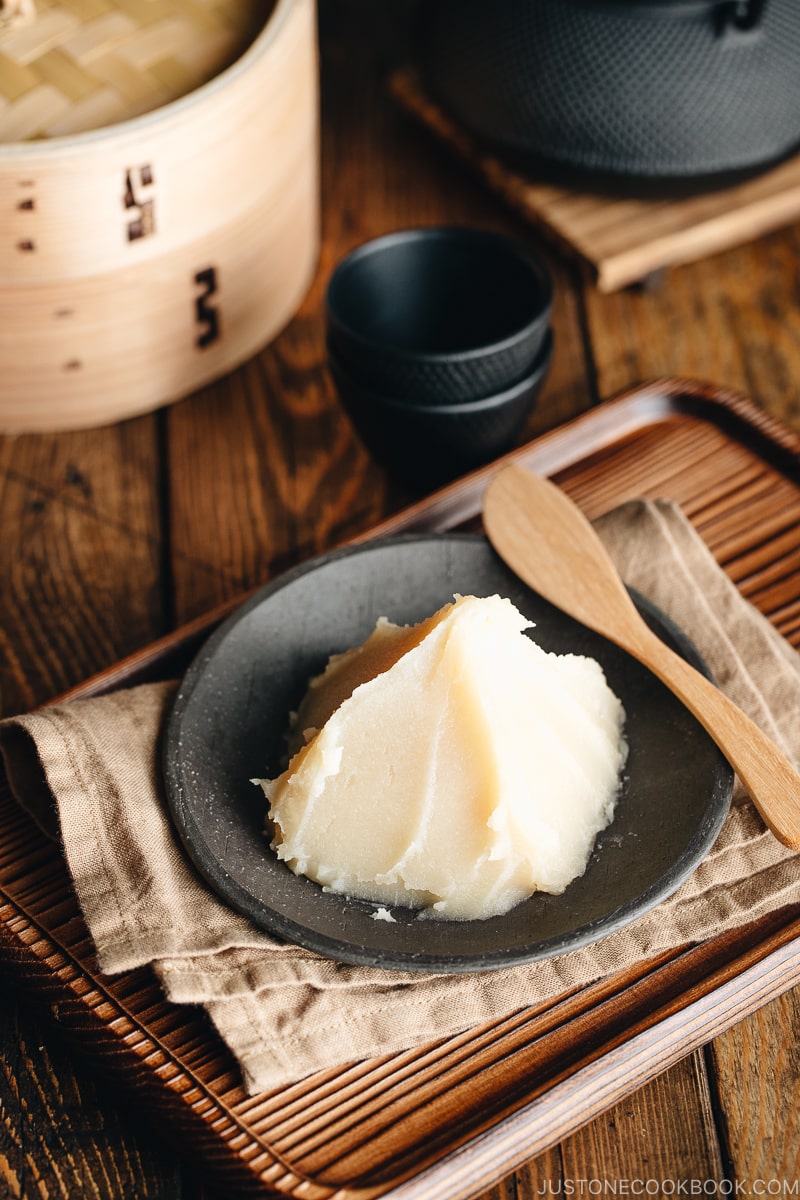
Types of White Beans Used for Shiroan
In Japan, there are several types of white beans you can use for White Bean Paste.
- Shiro Ingen Mame (白いんげん豆)
- Shirohana Mame (白花豆)
- Oofuku Mame (大福豆)
- Tebo Mame (手亡豆)
- Kintoki Mame (金時豆)
- Shiro Azuki (白小豆)
Please see below for types of white beans available outside of Japan.
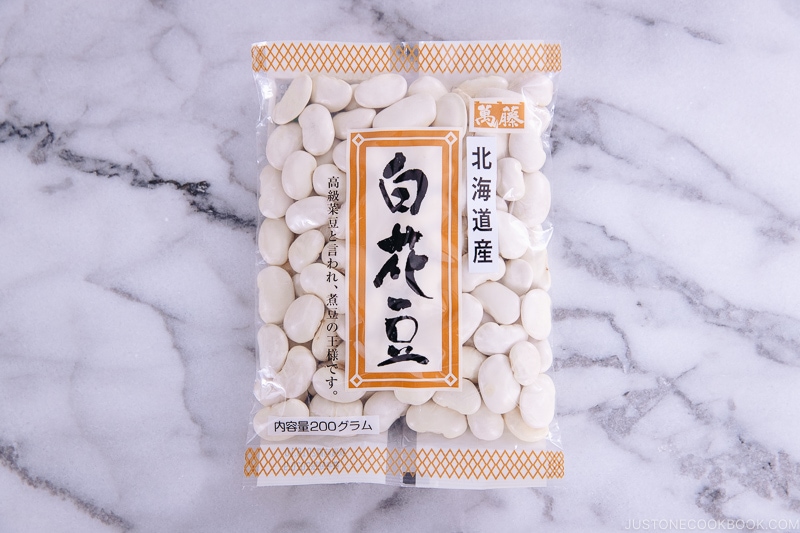
Frequently Asked Questions on White Bean Paste
1. What types of white beans should I use?
Use lima beans (butter beans) or navy beans. I used Shirohana Mame (白花豆) from Hokkaido in this recipe (bought in Japan).
2. Can I reduce the amount of sugar?
You can, but typical traditional recipes require ⅔ to 1 part of sugar for 1 part of beans (in some cases, more than 1 part). You can replace sugar with a healthier alternative, such as maple syrup or honey but the paste will be more liquidy and the flavor can be overpowering.
Sugar is necessary for preservation for the bean paste, but if you are going to consume soon, you can reduce the amount slightly.
3. Is salt necessary?
You may wonder why salt (or salty taste) is required in the mixture when you are trying to sweeten. Adding some salt contrarily makes it taste a lot sweeter and brings out more flavors.
4. Can I use a pressure cooker instead of simmering on the stove?
Yes, you can cut down on the cooking time by using a pressure cooker (Instant Pot). According to the Instant Pot, it takes 6-10 minutes for soaked lima beans and 7-8 minutes for soaked navy beans.
5. Can I use a food processor instead of pressing through the fine-mesh sieve?
Yes, you can use a food processor or blender to make a smooth puree. But even though you don’t have these kitchen appliances, you can use a fine mesh sieve to make a fine and smooth puree.
Do you have any other question? Please leave a comment below.
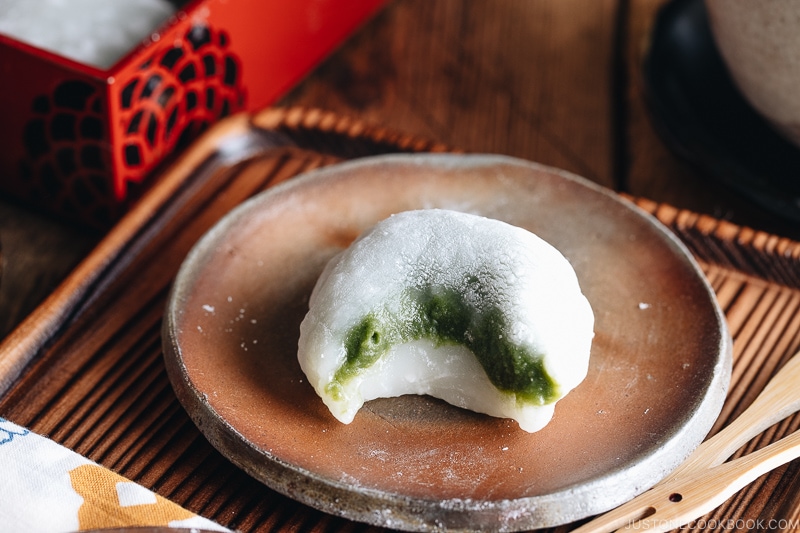
Japanese Sweets Recipes with White Bean Paste
You can simply replace the red bean paste with white bean paste for wagashi, Japanese confectionery. Here are some recipes you may like to try:
- Strawberry Mochi (Ichigo Daifuku)
- Manju
- Daifuku
- Imagawayaki
- Green Tea Mochi (recipe coming soon)
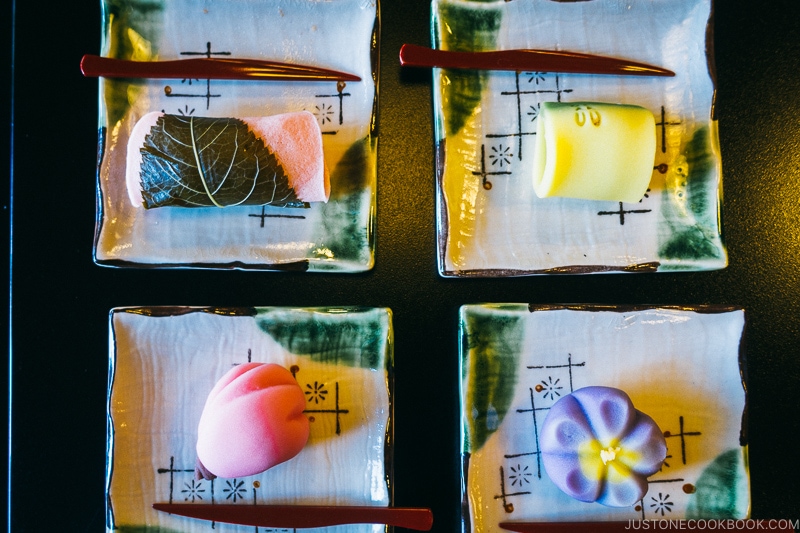
Try These White Bean Paste Variations
You may not see white bean paste as often, but instead, you will see colorful fillings that are made of white bean paste. To improve the taste of bland white bean paste, it is often mixed with other aromatic and colorful ingredients like the ones below:
- Matcha An (抹茶餡) – 100 g white bean paste + 2 g matcha (green tea powder)
- Sakura An (桜餡) – 100 g white bean paste + 5 g salted cherry blossoms
- Miso An (味噌餡) – 100 g white bean paste + 10 g sweet saikyo miso
- Kabocha An (南瓜餡) – 100 g white bean paste + kabocha (pumpkin/squash)
- Kimi An (黄身餡) – 150 g white bean paste + 1 egg yolk
- Kuri An (栗餡) – white bean paste + kuri kanroni
- Yuzu An (柚子餡) – white bean paste + yuzu zest
- Kurumi An (胡桃餡) – white bean paste + chopped chest
- Goma An (胡麻餡) – white bean paste + ground sesame seeds
White bean paste is also used to make Nerikiri combined with gyuhi (soft mochi). Add a few dollops of food coloring to create beautiful wagashi (picture above).
Are you looking forward to experimenting with wagashi filled with white bean paste? I’d love to see your creations!

Japanese Ingredient Substitution: If you want to look for substitutes for Japanese condiments and ingredients, click here.
Sign up for the free Just One Cookbook newsletter delivered to your inbox! And stay in touch with me on Facebook, Pinterest, YouTube, and Instagram for all the latest updates.
White Bean Paste (Shiroan)

White Bean Paste or Shiroan is commonly used as a filling for wagashi (Japanese confectionery) such as mochi and manju. The paste has a milder bean taste, so it makes a great alternative to red bean paste (anko or an)!
- 7 oz lima beans ((200 g; See Notes for Japanese names))
- ¾ cup sugar ((See Notes: Please adjust to your taste: ¾ to 1 cup, or 150 to 200 g))
- ½ tsp salt (kosher or sea salt; use half if using table salt)
- Gather all the ingredients.

-
In a large bowl, add the lima beans and rinse them under running water. Then soak them in plenty of water overnight (8 to 12 hours; require longer hours in winter).

- After 8-12 hours, you can easily remove the beans’ skin with your fingers. Discard the skin.

-
Add the beans in the pot and pour cold water just enough to cover the beans. To properly cook the beans, you will use just enough water and don’t let the beans move around in the water.

-
Bring it to a boil on medium heat. Let it boil for 2 minutes while foam starts to appear.

- Drain the water into the sieve. Quickly rinse the pot and put the beans back in the pot. Add cold water just enough to cover the beans.

-
Cover with a lid (slightly ajar and let simmer on low heat until beans become tender, about 1.5 to 2 hours.

-
Once in a while check the beans and skim off the foam on the surface. This helps to make the white paste even whiter. Add a bit more water if the water is not covering the beans. Make sure the amount of water is just enough to cover the beans.

- When you can easily crush the beans between two fingers, it’s done.

-
Drain the liquid. You may want to save a little bit of cooking liquid for the next step.

-
Transfer a small portion of drained beans to your fine-meshed strainer (this tool is also a flour sifter) over a large plate. Press the beans through the strainer using a wooden spatula. You will get a finer and smoother paste built up under the sieve/over the plate. If it’s too dry, put a tiny bit of cooking liquid on the beans before pressing. Alternatively, you can use a food processor to mash the beans. Add a little bit of cooking liquid if necessary.

- Put the paste in a clean saucepan. Add the sugar and salt and mix well to combine.

-
Turn on the heat to medium low heat and let the sugar dissolve. The paste will become liquidy.

-
Then let the moisture evaporate from the mixture on medium low heat until it becomes a smooth mold-able paste, roughly 15-20 minutes. Keep an eye on the paste all the time to make sure it doesn't burn. When you can draw a line on the bottom of the pan, it’s done. The paste will continue to evaporate as it cools down, remove from the heat and pot immediately.

-
Transfer the white bean paste to a clean container with a lid. If you’re using it in a few days, refrigerate. Otherwise, divide the paste into a small portion and freeze them.

Lima Beans: If you’re in Japan, you can get one of Shiro Ingen Mame (白いんげん豆) such as Shirohana Mame (白花豆), Ofuku Mame (大福豆), Tebo Mame (手亡豆), or Kintoki Mame (金時豆).Or you can use Shiro Azuki (白小豆). For White Bean Paste, please try finding lima beans (butter beans) or navy beans. If you can’t find them, then the last option is Cannellini Beans. I do not recommend substituting with other beans because the taste and texture will be completely off.
Sugar: Please use granulated white sugar, and do not use sugar that has color (such as brown sugar) because you’re trying to make WHITE bean paste. If you’re going for traditional white bean paste, the sugar amount will be ⅔ to 1 part of sugar by weight to 1 part of beans. If you reduce the amount of sugar significantly, it will not give enough moisture to the paste, which may result in a different texture. Wagashi is meant to be a bit on the sweet side in order to complement the bitter taste of matcha (drink).
Recipe by Namiko Chen of Just One Cookbook. All images and content on this site are copyright protected. Please do not use my images without my permission. If you’d like to share this recipe on your site, please re-write the recipe and link to this post as the original source. Thank you.
from Merah Hati Cintaku https://ift.tt/2XEqWHj
via merahhaticintaku.blogspot.my
No comments:
Post a Comment